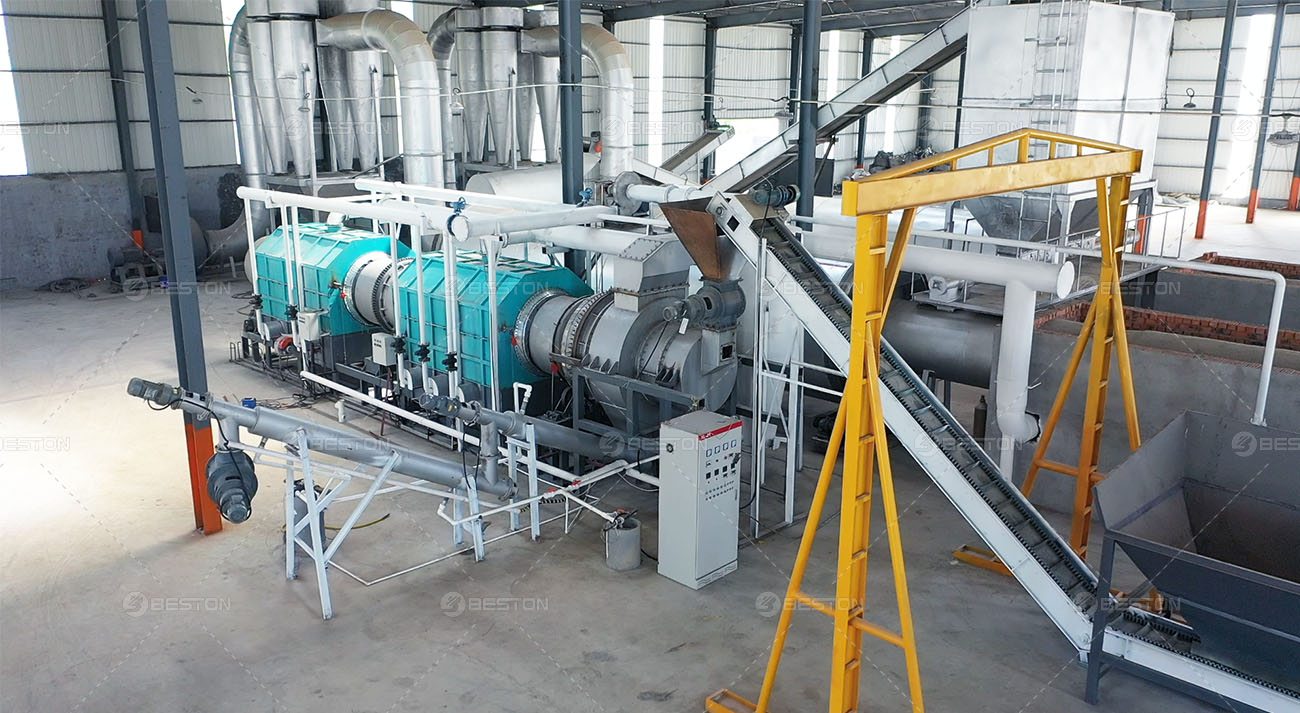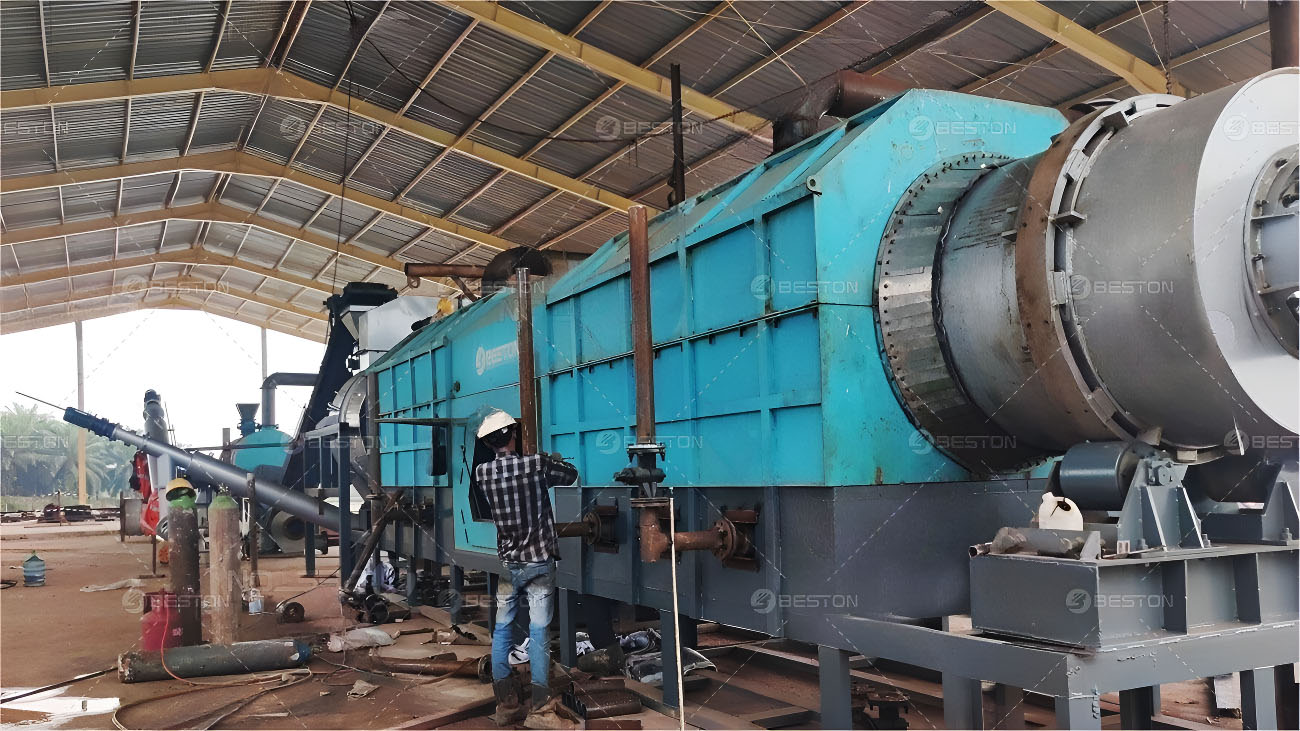Investment Landscape: Key Considerations for Biomass Pyrolysis Plant
Investing in a biomass pyrolysis plant represents a strategic move in the evolving landscape of sustainable energy and waste management. As we delve into the intricacies of this technology, it’s essential to navigate the investment terrain with precision. In this exploration, we uncover the key considerations and critical aspects that investors should note when venturing into the realm of biomass pyrolysis plants.

Understanding Biomass Pyrolysis: A Technological Prelude
Biomass pyrolysis is a thermochemical process that involves the controlled decomposition of organic materials, typically biomass, in the absence of oxygen. This process yields valuable by-products such as biochar, bio-oil, and syngas. The investment in a biomass pyrolysis plant signifies a commitment to sustainable energy production and resource utilization.
Critical Factors in Biomass Pyrolysis Plant Investments
1. Feedstock Selection and Availability
The choice of feedstock is pivotal in determining the efficiency and output of a biomass pyrolysis plant. Investors must carefully assess the types of biomass available in the vicinity, considering factors such as moisture content, density, and energy content. A diversified feedstock strategy can enhance operational flexibility and resilience.
2. Technology Selection: Fast Pyrolysis vs. Slow Pyrolysis
Investors face the decision between fast pyrolysis and slow pyrolysis technologies. Fast pyrolysis involves rapid heating of biomass, producing higher quantities of bio-oil, while slow pyrolysis operates at lower temperatures, emphasizing biochar production. The choice depends on the desired output and market demand for specific by-products.
3. Scale of Operations: Balancing Capacity and Demand
Determining the scale of operations is a crucial consideration. The sizing of a biomass charcoal making machine for sale should align with the available biomass feedstock and the anticipated market demand for the end products. Striking the right balance ensures optimal resource utilization and economic viability.
4. Product Utilization Strategies
Investors should have a clear strategy for utilizing the products generated by the biomass pyrolysis plant. Whether it’s incorporating biochar into agricultural practices, utilizing bio-oil as a renewable fuel, or exploring syngas applications, a well-defined product utilization plan enhances the overall profitability of the investment.
5. Environmental Compliance and Regulations
Adherence to environmental regulations is paramount in the waste-to-energy sector. Investors must thoroughly understand and comply with local, regional, and national environmental regulations governing biomass pyrolysis plants. Proactive compliance not only avoids legal issues but also enhances the plant’s reputation as an environmentally responsible entity.
6. Economic Feasibility and Return on Investment (ROI)
A comprehensive economic feasibility study is essential for any investment in a biomass pyrolysis plant. Calculating the return on investment involves considering capital costs, operational expenses, market dynamics, and revenue projections. A robust financial model ensures that the investment aligns with the expected economic returns.
Technological Nuances: Innovations in Biomass Pyrolysis
Advanced Pyrolysis Reactor Designs
Innovations in reactor designs play a pivotal role in enhancing the efficiency of biomass to biochar production equipment for sale. Advanced pyrolysis reactors incorporate features such as improved heat transfer mechanisms, optimized residence times, and enhanced control systems. These innovations contribute to higher yields and reduced energy consumption.
Integration of Catalytic Processes
The integration of catalytic processes within biomass pyrolysis plants is an emerging trend. Catalytic pyrolysis involves the use of catalysts to facilitate the decomposition of biomass, leading to improved product yields and quality. This technological advancement presents an opportunity for investors to enhance the overall performance of their plants.
Synergies with Combined Heat and Power (CHP) Systems
Investors exploring biomass-to-energy solutions can leverage synergies with Combined Heat and Power (CHP) systems. By integrating the heat produced during pyrolysis into power generation, biomass pyrolysis plants can achieve higher overall energy efficiency. This integration contributes to the sustainability and economic viability of the investment.
Risk Mitigation Strategies for Biomass Pyrolysis Investments
Market Risk and Product Diversification
Market dynamics can influence the success of biomass pyrolysis plant investments. To mitigate market risks, investors should diversify product outputs. Exploring multiple end-product streams, such as biochar, bio-oil, and syngas, hedges against fluctuations in individual markets and enhances overall resilience. Please visit https://bestonasia.com/ for more investment consultation
Supply Chain Resilience and Feedstock Contracts
Ensuring a resilient supply chain is essential for the uninterrupted operation of biomass pyrolysis plants. Investors can mitigate supply chain risks by establishing long-term feedstock contracts with reliable suppliers. Securing a consistent and quality biomass supply minimizes disruptions and contributes to stable operations.
Technology Risks and Research Collaboration
The field of biomass pyrolysis is dynamic, and technological risks may arise. Investors can mitigate these risks by actively participating in research collaborations. Engaging with research institutions and staying abreast of technological advancements ensures that the biomass pyrolysis plant remains at the forefront of innovation.

Conclusion: Strategic Investments for a Sustainable Future
In conclusion, investing in a biomass pyrolysis plant demands a strategic approach that encompasses technological nuances, economic feasibility, and risk mitigation strategies. The intricate interplay between feedstock selection, technology choices, and product utilization defines the success of such investments.
As the world seeks sustainable and renewable energy solutions, biomass pyrolysis emerges as a key player in the transition towards a circular and eco-friendly economy. Investors navigating this landscape with a keen understanding of the factors outlined herein are poised to not only contribute to sustainable energy practices but also realize the economic benefits of strategic biomass pyrolysis plant investments.